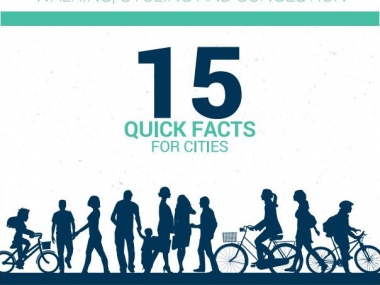How walking and cycling reduce congestion - FLOW 15 Quick Facts for cities
Edited on
12 December 2017What happens when you remove a car lane to put in a new bicycle lane? Or you give pedestrians more time to cross a busy road? FLOW published a new collection of Quick Facts from cities who measured the impact pedestrian and cyclist measures have on congestion.

The CIVITAS FLOW project has collected 15 Quick Facts to provide cities with evidence of how walking and cycling measures can not only improve conditions for pedestrians and cyclists, but also reduce congestion. From a FLOW survey we know that nearly half of European political and administrative decision makers worry about congestion when introducing walking (41%) and cycling (48%) measures.
But there's growing evidence that walking and cycling measures can actually help reduce congestion in cities. The FLOW Quick Facts describe some surprising results about overall transport efficiency that has been achieved while improving conditions for walking and cycling.
Download the FLOW Quick Facts HERE
About FLOW
FLOW is a CIVITAS Horizon 2020 project, running from May 2015 to April 2018. FLOW has developed a multimodal analysis methodology to assess the impact of walking and cycling measures on transport network performance and congestion. FLOW’s ideas are being tested in its partner cities of Budapest, Dublin, Gdynia, Lisbon, Munich and Sofia.
For more information, visit: http://h2020-flow.eu/
Contact:
FLOW Dissemination Manager – Polis
Dagmar Köhler, dkoehler@polisnetwork.eu
Pasquale Cancellara, pcancellara@polisnetwork.eu
More on environment on the URBACT website
Read our last articles on this theme:
- How do URBACT Good Practices strive towards more sustainability together with citizens and other stakeholders?
- Can nature make your city climate-resilient?
- From nature lovers to nature activists
Have a look at the relevant URBACT Good Practices
And check out the Action-Planning networks CityMobilNet and Freight TAILS
 Submitted by URBACT on
Submitted by URBACT on




